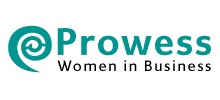Debt can often feel like a heavy weight chained to your ankle, constantly dragging you down and preventing you from reaching your financial dreams. Whether it’s student loans, credit card bills, or a mortgage that feels unending, the struggle is all too real. But what if we told you there was a way to break free, to shrug off that weight and step into financial freedom? This guide is your ultimate resource for navigating the choppy waters of debt and setting sail toward a more secure future. We’re here to tell you there’s no need to feel buried under your financial obligations.
1. Consider Payday Loan Relief
One effective strategy to consider is Payday Loan relief. Often, people find themselves trapped in a vicious cycle of high-interest Payday Loans, unable to break free from the escalating debt. Payday Loan consolidation programs offer lower payments and interest rates, making it easier to get out of debt. These programs combine all your Payday Loans into one manageable monthly payment, usually at a fixed interest rate.
This approach simplifies your financial commitments and makes them more manageable, ultimately leading to a more sustainable path out of debt. Therefore, considering a consolidation program could be a critical step toward regaining your financial footing if you’re grappling with multiple Payday Loans.
2. Create a Budget and Stick to It
Creating and sticking to a budget is crucial for getting out of debt. It allows you to track your income, expenses, and savings, clearly showing where your money is going. By doing so, you can identify areas where you can cut back on spending and allocate more towards paying off your debt.
Budgeting also helps you avoid overspending and accumulating more debt. It may require some sacrifice and discipline, but in the long run, it will pay off by helping you achieve your financial goals. Several budgeting methods and tools are available to help you get started, from traditional spreadsheets to modern budgeting apps.
3. Consider Debt Settlement
Debt Settlement is another viable option for reducing your financial burden. This strategy involves negotiating with your creditors to agree to accept a payment that’s less than what you owe. This approach can significantly lower your debt and offer immediate relief, but should be approached with caution, as it can impact your credit score.
Working with a reputable debt settlement company can guide you through this process and ensure you make informed decisions. Considering this as a last resort option after exploring other debt relief strategies is essential. Ultimately, the goal is to find a solution that offers sustainable debt relief and sets you toward financial stability.
4. Pay Off Debts With the Highest Interest Rate First
Paying off debts with the highest interest rate first, often referred to as the ‘avalanche method,’ is a highly effective strategy for debt reduction. This approach targets debts with the most substantial financial impact, thus resulting in significant savings over time. Focusing on these high-interest obligations reduces the overall interest you’ll pay, accelerating your journey out of debt.
However, while this method is mathematically efficient, it demands discipline and patience as progress may initially appear slow. It’s essential to stay motivated and committed in the long run. This strategy and other debt management techniques can provide a comprehensive approach to achieving financial freedom.
5. Look for Ways to Reduce Your Expenses
Reducing expenses is an effective strategy for freeing up additional funds to pay off your debt. This might entail cutting back on non-essential items such as dining out, entertainment subscriptions, or luxury purchases. It could also involve more significant lifestyle changes, such as downsizing your living space or choosing a more affordable mode of transportation.
While these changes can be challenging, remember that they are temporary measures to achieve long-term financial stability. Keeping this goal in mind can motivate you to endure these adjustments. Lastly, tracking your spending can help identify areas for potential savings and keep you accountable to your budget.
6. Bring more money in
To help pay off debt more quickly, look to increase your income. Ask your boss for a salary increase; the worst they can do is to say ‘no’. Sell off anything you no longer use on eBay or Facebook Marketplace. Take in a lodger if you have a spare room, make money from your car or start a side-hustle business if you have any spare time.
7. Avoid Taking Out New Loans
Resisting the urge to take out new loans is crucial in your debt reduction journey. While it may seem like a quick fix, additional borrowing only increases your debt load and potentially extends the timeline to achieve financial freedom. It’s essential to focus on repaying existing debt rather than accumulating more.
If you find yourself in a financial bind, consider alternatives like creating an emergency fund, cutting back on expenses, or seeking advice from a financial counselor. In the end, remember that the ultimate goal is to break free from the cycle of debt, not to dive deeper into it.
Breaking free from debt is a challenging but achievable goal. You can gradually chip away at your debt and move toward financial freedom by implementing strategies such as payday loan consolidation, budgeting, and reducing expenses. It may require sacrifices and discipline, but the result will be worth it. Remember to stay motivated, seek help, and celebrate each milestone.

